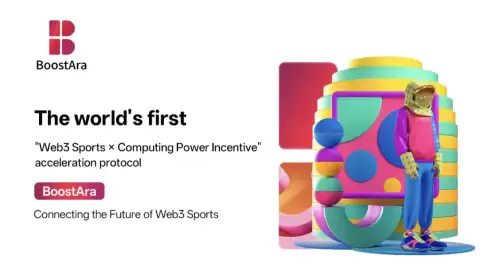 |
|
 |
|
 |
|
 |
|
 |
|
 |
|
 |
|
 |
|
 |
|
 |
|
 |
|
 |
|
 |
|
 |
|
 |
|
Cryptocurrency News Articles
Move programming language's origin is not super cypherpunk
Mar 17, 2025 at 11:09 pm
Facebook (now Meta) created Move after the Libra/Diem team compared major smart contract languages (Bitcoin Script, Ethereum Virtual Machine bytecode languages)
In the rapidly evolving landscape of blockchain technology, the choice of programming language can significantly influence the development and adoption of decentralized applications (apps). While Solidity has emerged as a dominant force in the Ethereum ecosystem, another programming language is quietly gaining momentum: Move.
Created by Facebook (now Meta) and later spun out as a fully independent, open-source project headed up by Aptos Labs and supported by the Aptos Foundation, Move is a new programming language designed for blockchain applications.
The story begins with the Libra/Diem project, which set out to create a blockchain-based stablecoin. As the project progressed, the team made a comprehensive comparison of major smart contract languages, including Bitcoin Script and Ethereum Virtual Machine (EVM) bytecode languages.
After careful consideration, they reached the conclusion that their formidable in-house tech talent could develop a programming language specifically designed for crypto finance, drawing upon years of private and public sector research in programming language design.
This programming language would be imbued with several critical properties:
* Fast and cheap transactions to create a competitive user experience, especially for decentralized finance (DeFi) applications. Aptos aims for high transaction throughput, with theoretical capabilities reaching up to 160,000 transactions per second (TPS) through its parallel execution engine, Block-STM.
* Sub-second finality to ensure swift transaction confirmation, enhancing the user experience in time-sensitive applications.
* Future upgrades that won’t disrupt existing projects. This helps developers feel more confident building long-term solutions without worrying about things breaking because of a Move upgrade.
* The ability to upgrade smart contracts without affecting the user experience, which is essential for mainstream adoption. This will allow teams to quickly implement bug fixes and new features with zero downtime.
These factors are crucial for startups applying for venture capital funding.
Move smart contracts are designed to be upgradeable without affecting the user experience, which is essential for mainstream adoption. This enables teams to implement bug fixes and new features quickly.
Smart contract flexibility through Move on Aptos’ specific security features will result in better and faster product shipping. Being more flexible, Move on Aptos can quickly adapt to support new ecosystems.
As it was initially developed for Meta’s Diem project, Move is designed for safety, resource management and performance, making it attractive for developers looking for a secure yet robust language for smart contracts.
When deploying code using Move, the code will be verified across several crucial coding conditions like proper resource management, type correctness and reference safety. No matter what happens to the code, it will be verified first to prevent any faulty or malicious smart contracts from running.
This is the power of Move’s built-in bytecode verification.
Real-time verification of the absence of bugs
Renowned computer science pioneer Edsger Dijkstra noted, “Program testing can be used to show the presence of bugs, but never to show their absence!”
Move’s formal verification capabilities let developers actually prove that there are no bugs in specific code according to preset specifications.
MoveVM is less battle-tested than Ethereum’s virtual machine, but as Rushi Manche, founder of Movement Labs, has explained, Move requires much less code auditing. The MoveVM runtime can act as an “auditor at runtime.”
The verifier inside the MoveVM ensures that the transaction code is not harmful and that it cannot create, duplicate or destroy resources not allowed by the signer(s) of the transaction. In other words, MoveVM is an “auditor at runtime” rather than a human smart contract auditor.
Today, Move on Aptos is more than just a smart contract language. Move on Aptos is the longest-standing, most recognized and widely used version of Move, boasting one of the fastest-growing developer communities and a rapidly growing ecosystem of infrastructure, tooling and projects.
Quickly verifying code before deployment created the conditions for the Move on Aptos ecosystem. From a flawed Web2 beginning, Move is now primed to grow DeFi.
Disclaimer:info@kdj.com
The information provided is not trading advice. kdj.com does not assume any responsibility for any investments made based on the information provided in this article. Cryptocurrencies are highly volatile and it is highly recommended that you invest with caution after thorough research!
If you believe that the content used on this website infringes your copyright, please contact us immediately (info@kdj.com) and we will delete it promptly.






























































